|
|
|
¢º Copper Gallery £¾Copper and Life
|
|
Electricity
|
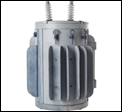 |
Electricity plays an important role in helping people lead a civilized life, and copper is highly valued and widely used in this area.
Only metals with fine conductivity and thermal properties can be used in incandescent bulbs, electric wires, wiring devices
(sockets, plugs, and switches), and measuring devices. Copper is a material indispensable to electricity and humankind can enjoy
the benefits of electric technologies thanks to copper and copper alloys.
|
|
Electronics
|
 |
The electronics industry, linking vacuum tubes, transistors and IC, is the fastest growing and most extensive of all industries. This industry can
be characterized with four words - light, thin, simple, and small. The copper alloy material have not only made significant contributions to
making the products light, thin, simple, and small, but it is an indispensable metal in the industry in making various circuit boards, switches,
antenna, and all types of contact points. Copper is used in the major parts of electronics goods such as refrigerators, microwave ovens, TV,
VTR, air conditioners, and acoustic devices. Every button
|
|
of the goods uses copper and this helps us understand how much contribution
copper has made in the advancement of modern civilization.
Copper is also used in parts for refrigerators, electronic ovens, TVs, VTRs, air conditioners, and acoustic devices.
If we understand that every button is made with copper, we may understand how much copper contributes to modern civilizations.
|
|
Semiconductor, telecommunications
|
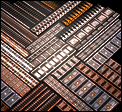 |
In the course of an industry becoming state-of-the-art industry, the development of non-ferrous metals, notably copper and copper
alloy materials have played a crucial role. The material for making leadframes in semiconductors is a sophisticated special copper
alloy produced by adding small amounts of other metals to copper. It is an ultramodern special copper alloy material that has to fulfill the three
|
|
requirements of high level of strength, fine elongation rate and high conductivity.
The materials called CDA194 and CDA195, manufactured by the U.S. once prevailed in the global semiconductor market.
With the new materials developed by sampo entering the market, Korea was able to show off its technology to the world.
The Company went as far as to export manufacturing technology to the German market. This marked the first exported sophisticated technology.
Copper is indispensable to the modern industries. This holds true for telecommunications equipment. Copper enabled the advancement
of all telecommunications equipment including telegrams, telex, facsimile, wireless units as well as cables and antennae thanks to its excellent
conductivity.
|
|
Transportation means
|
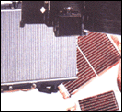 |
Automobiles, electric trains, ships and aircrafts are composed of numerous parts and electronic devices.
For instance, about 13 kg of copper and copper alloy parts goes into a passenger car to perform as a moving machine.
Let us look at the major parts that make up a car. The radiator that cools the high temperature in the engine system is a major element of a car,
requiring thermal conductivity and corrosion resistance due to its frequent contact with water.
Therefore, it is absolutely necessary to use copper plates in such parts.
|
|
Copper is also used in various parts and decorative elements of electric trains, which are an ever-so-popular means of land transportation in cities.
Ships are likened to moving buildings. Like buildings, the different pipes for water supply, hot water supply, and cooling/heating functions are key
to the performance of a ship. Seawater resistance is essential for the piping materials used. Copper tubes and copper alloy tubes are indispensable
to shipbuilding.
Copper is a material often used in aircrafts to maintain its complicated functions. Different cables, hydraulic pipes, and switch contact
points in aircrafts have to use copper. The materials should be light in weight, durable, highly resistant to corrosion, and flexible enough
to endure vibrations; Copper is the material that fulfills all such requirements.
|
|
Power plants, desalination facilities
|
 |
Only limited materials may be used in power plants or desalinating facilities (facilities that convert sea water into drinking water).
This is because these facilities require an intricate set of requirements such as high levels of corrosion resistance, seawater resistance,
hygiene, strength and high-temperature resistance. Cupro-nickel (an alloy of copper and nickel) and Al-bronze (an alloy of bronze and aluminum)
are materials that meet such conditions, being widely used at home and abroad.
|
|
sampo Corporation exported 12,000 tons of cupro-nickel pipes to Saudi Arabia in the construction of the country's Al-Shoaiba desalination plant.
The Company also supplied copper products for many other projects, thus demonstrating world-class technologies and quality products.
|
|
Construction
|
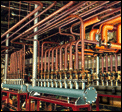 |
Copper products are even more widely used in construction. Copper is used in pipes to build houses to waterproofing film for dam construction.
Copper is an ideal piping material in view of corrosion resistance, hygiene, and economical aspects not only for heating coils in the "ondol"
floor heating system, but also for waterworks, water supply, hot water supply, cooling and heating, gas, fire extinguishing, and sewage drainage
piping.
|
|
Copperplate roofing materials have been known to be the best roofing material since old times.
Copper roofing material is more widely used in the U.S., Europe and Japan due to its semi-permanent life expectancy and its excellent
decorative design with the mystical color change of verdigris, not requiring additional painting or coating. It also remains stable in
the ever-changing weather conditions, especially in the urban industrial area where the atmosphere is filled with strong acids such as
sulfurous acids.
The usage of copper as roofing material for buildings to be preserved permanently such as the National Assembly, the National Museum of Korea,
or temples and general houses is on the rise. sampo reproduced the traditional Korean roofing style in the Independence Hall and temples
across the country in accordance with the standards specified by the Office of Cultural Properties, thereby opening a new chapter in the Korean
roofing culture.
|
|
Coins
|
 |
The life expectancy of a freshly printed bill is about 1 to 2 years. The torn and worn bills have to be scrapped, wasting a great deal of money
spent in issuing new bills.
With the exception of becoming worn out or the currency unit changes, coins, on the other hand, may be used continuously and cannot
be collected to be reused.
|
|
Even these days when credit cards, checks and high denomination bills are becoming more common, the demand for coins is continuously
growing due to its role as a supplementary currency and the increasing the number of vending machines.
Coins change color depending on the alloy ingredient of copper. The coins used in Korea, denominations of 500 won and 100 won are made of
cupro-nickel (alloy of copper, zinc, and nickel), 70% of the globally distributed coins use this material, whereas 10 won coins use brass
(alloy of copper and zinc).
The reasons for using copper alloy materials in coins since old times are threefold. First, copper alloy materials do not corrode easily and have
a long distribution life. Second, the materials can be collected and reused at all times. Third, coins pass through many hands and require hygiene.
Copper allows the surface of the coins to be free of germs thanks to copper's unique anti-microbial ability, free from concerns over infections.
|
|
Food Industry
|
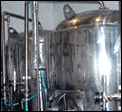 |
Copper has superior hygienic quality due to sterilization effect, making it useful in food-related industry, medical- and hygiene-related
industries. Copper is an essential metal used in the equipment for food production, pharmaceutical and confectionery.
Take the brewing industry for example. There are several types of alcoholic beverages such as makgeolri (unrefined rice wine), wine, beer, and whisky.
|
|
These alcoholic beverages either belong to fermented liquor or distilled liquor. Since old times, for unknown reasons, makgeolri brewers have
been using copper storage tanks and copper pipes.
Whiskey or beer is the same. It is worthwhile to note that the scotch whiskey brewers in Scotland use copper plates in various kilns.
The saying that "the liquor tastes best when brewed in copper containers or copper pipes" still holds true. In the pharmaceutical industry,
vitamin tablets are made using copper. Usually, those who are feeble or tired take vitamins to relieve the fatigue and many of these vitamins
have red and yellow coating. These colorings are usually sugar coating and ingredients of vitamins are included in this colored layer. Copper
kilns are used in making these sugared tablets because copper has superior thermal conductivity and corrosion resistance.
Confectionary makers also use copper a great deal. Large confectionaries use copper kilns to boil red beans or to make toffees. Copper allows
uniform processing of target products.
|
|
Arts and other areas
|
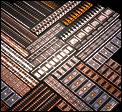 |
Copper is an essential metal used in the arts from bronze Buddha images, Buddhist temple bells representing the ancient arts, to the modern
sculptures and traditional Korean instruments like the jing (gong), the bara (drum), and modern wind instruments such as trumpets and pipe
organs such as at the Sejong Center.
The materials should have good molding and processing capabilities as well as good appearances. When making musical instruments,
only few metals can meet the
|
|
requirements of making clear and pure sounds. Copper is one of the most representative metals.
In addition to the use of copper in the above areas, the scope of application of cooper is ever so broad in various furniture decorations,
locks, medical devices, and ornaments. The importance of copper can be summarized thus: "Without copper, modern civilization would not have
made advancement."
|
|
Defense Industry
|
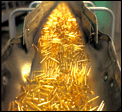 |
One event of the past that we would like to forget is during the times when Korea was under the rule of Japan. The Japanese took away brassware from
Korean households in the name of "delivery to the government". Brassware made of copper such as containers, spoons and chopsticks, fire pots and
washbasins were considered invaluable and were used during ancestor worships or on festive days, and on other ceremonial occasions.
|
|
We cannot help but wonder where those brassware were used by the Japanese at the time. They were probably used for making war machines
and armaments such as cartridge cases. Copper is a metal that maintains an absolute standing in the modern defense industry because of
its processing and recycling capabilities.
A wide range of cartridge cases from sporting ammunitions used for hunting and sports and cartridge cases used in small arms to
ammunition for field guns are made with copper alloys. Copper alloy s are reusable at all times after collecting and recycling.
|
|
|

